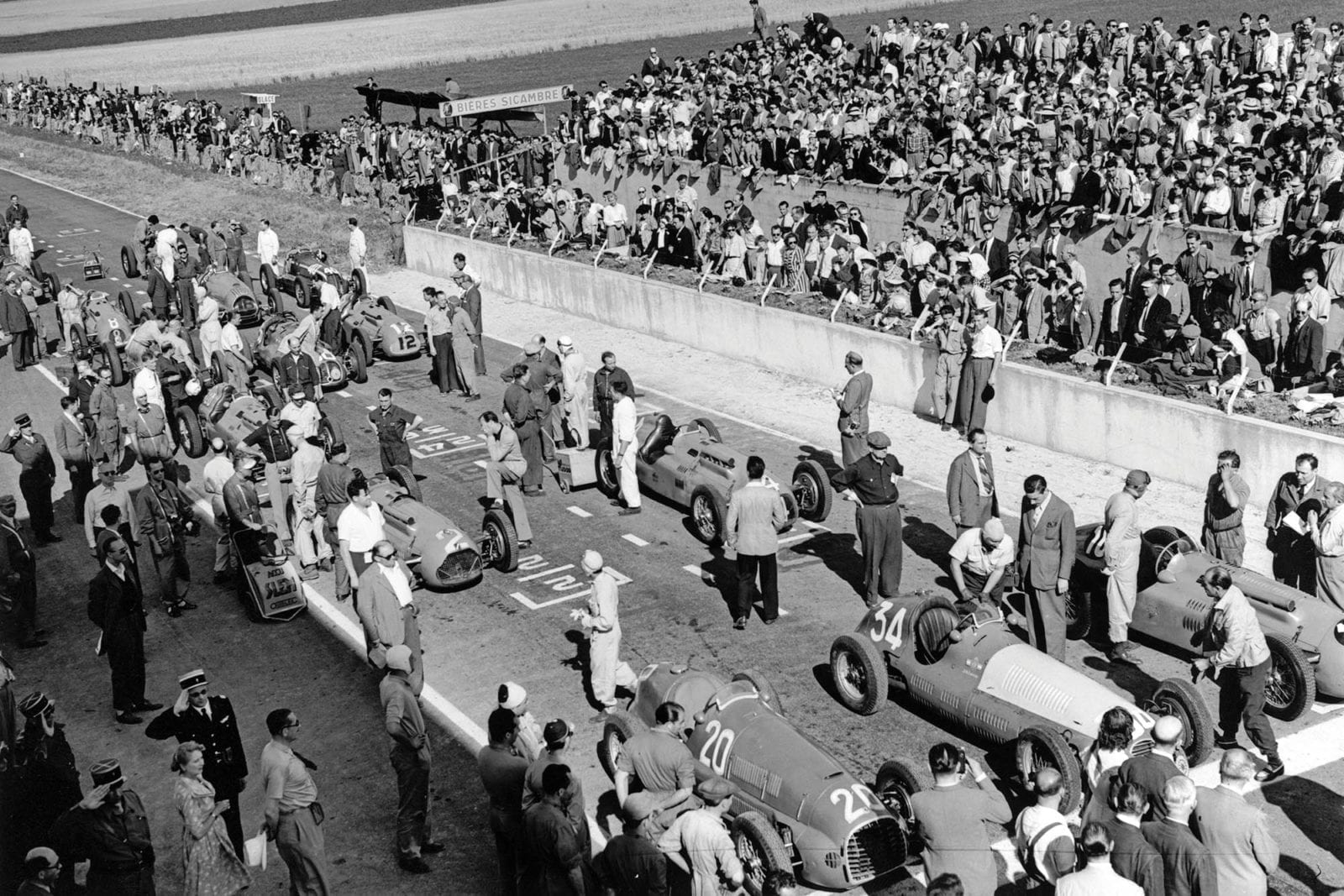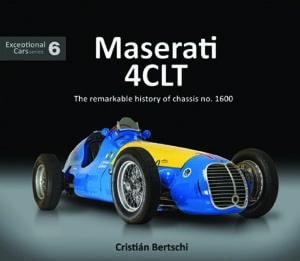The making of Fangio
The Maserati 4CLT was the car that launched the Argentinian ace, and this new work tells its story, says Gordon Cruickshank

The master Fangio lines his Maserati (34) up in the middle of the front row at Reims in 1949
LAT Photographic
Next from the busy Porter premises, this landscape-format work is another single-chassis work listing one car’s complete life cycle – in this case a car with a prime record. Not a grand prix car in itself, yet a grand prix winner – twice. It’s a Maserati 4CLT voiturette, one of the pair which gave Juan Manuel Fangio the tools to break into European racing and begin his remarkable grand prix career.
As expected, the book kicks off with a sweep through the Trident’s racing past up to the point where the 4CL is gasping in the wake of the Alfettas and Maserati decides to up the pressure, notably with twin superchargers on the 16-valve four, mounted in a new chassis with improved suspension, all detailed here in photos and drawings.
A debut victory at San Remo in 1948 indicated that the new 4CLT was the best thing a privateer could buy if he couldn’t land a works Alfa seat. As Bertschi explains, aspiring Argentinians at this time had the crucial support of the ACA – Automóvil Club Argentino, a sort of Racing for Britain equivalent but with political backing from General Perón and the funds to buy cars. And they did – a pair of the new 4CLTs, one being chassis 1600, the book’s subject.
In their blue and yellow livery, the cars brought Fangio six grand prix victories, two in 1600, the others in 1599, and Bertschi includes small biographies of the JMF and team-mate Benedicto Campos, who baled out as he didn’t want to have to thank Perón personally for any success, as well as its other pilots Marimón, González and Rosier.
Each of its races is covered, although this section is short compared to later years when it received a Ford V8, and then disappeared in the 1950s to be tracked down much later. I’m not qualified to adjudicate on the research on its identity, but the tale of creating a spare engine from scratch is impressive, while the current owner ably describes maintaining and racing the car.
Lavish studio photography is balanced by many period shots – I liked the photo of the slightly too short transporter with a hole in the tailgate for the car’s tail to project through. Neither cars nor people were so precious then.

Maserati 4CLT Chassis 1600
Cristián Bertschi
Porter Press
£30,
ISBN: 978-1-907085-75-8.
porterpress.co.uk
The Last Open Road audiobook
Burt Levy
Here’s something different: a full-performance audio motoring novel – a mix of narration and acting from book one of Levy’s well-known cycle.
Taking its hero Buddy deep into sports car racing in 1950s West Coast USA, it’s full of period atmosphere and detail, with background sound effects from all the right cars. Plus real racing people: the fun is trying to identify who’s playing which role: is that Brian Redman, or David Hobbs? Hang on, that mechanic’s voice sounds like Marino Franchitti… GC
On CD or MP3.
Thinkfast Ink, lastopenroad.com, $55
Formula 1 All the races – The first 1000
Roger Smith
This is a sizeable recap of the history, statistics and spectacular details of F1’s path from Silverstone in 1950 to Shanghai in 2019. Smith’s substantial limited-edition book rates each race by incorporating an F1 journalist jury, as well as including a 2019 season recap available for download.
Race recaps, photos and headlines alongside ratings, records and trivia offer a straightforward one-stop shop for F1 history. JWS
Published by Veloce, £65 ISBN 978-1-787115-66-8
Grand Prix Icon: Lotus 72
DVD by Supercharged Broadcast
In a world monopolised by fake news and creative editing, this is a throwback: a nuts-and-bolts tale presented in a nuts-and-bolts manner, bereft of frills and nonsense. It features a brace of discs, the first comprising the main documentary (almost two hours) and the second (even longer) rammed with extra material.
It includes some brief action clips and illustrative stills, but for the most part it is a series of interviews with those at the heart of the Lotus 72 story, including drivers (not least Emerson Fittipaldi), engineers, mechanics and other key team personnel. It’s more for those happy to crack open a mature brandy and engage in the old-fashioned art of listening. SA
lotus72dvd.com, £20

